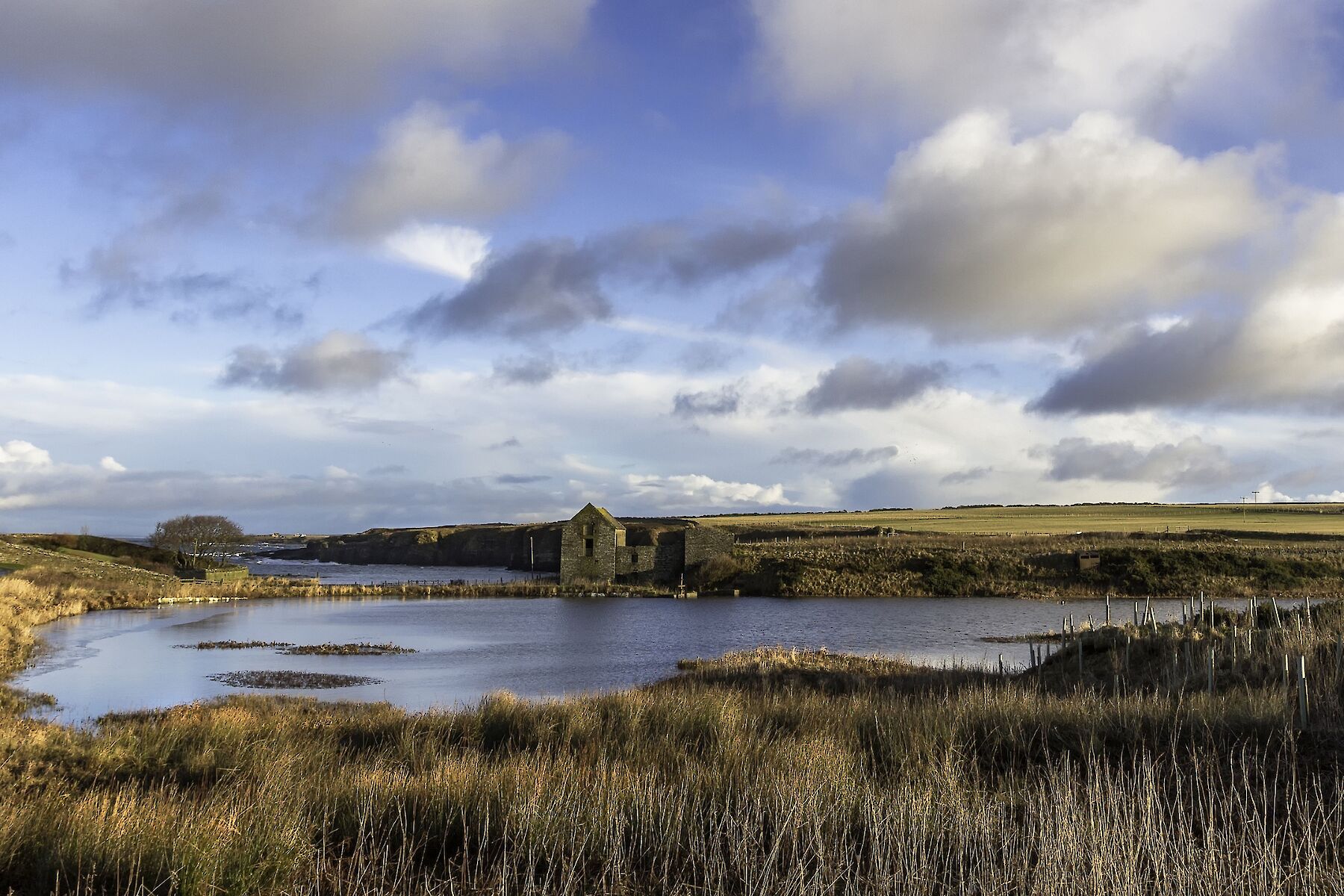Ham Mill is an important example of its agricultural building type in Caithness. Having undergone a number of interrelated changes of use, the building is notable for its scale and it continues to reflect the historic importance of the grain trade to the economy of the area. Prominently sited within its rugged coastal setting it is also notable for its Caithness flagstone construction. The location of the building appears to correlate with a building depicted on Roy’s map of 1747-51, possibly dating the first phase of its construction to the early half of the 18th century.
Originally a girnal (a simple store-house for grain prior to shipping over seas), the building was likely to have been converted to a threshing mill in the early decades of the 19th century and again to a water-powered corn mill by the middle of the 19th century at which time a further storey was added, re-using many of the original roof timbers.
The building ceased operating as a mill after 1900 and it no longer retains any internal flooring, internal or external mill machinery or water wheel. Further later 20th century alterations include widening of the ground floor opening and the insertion of a concrete grain dryer. The burn beside the mill was dammed in the late 20th century creating a small lochan.
The former mill at Ham is historically associated with the Sinclairs of Ratter and was later owned by James Traill, the renowned local industrialist and agricultural improver who worked a number of quarries and other mills in the area including nearby Castletown Mill .
Rating
Categories
Agriculture
Location Information
Area: Caithness North
OS Grid Reference: ND 2390 7355
